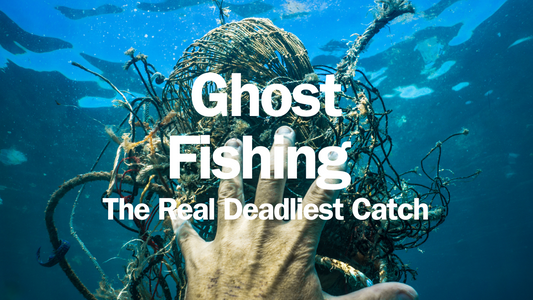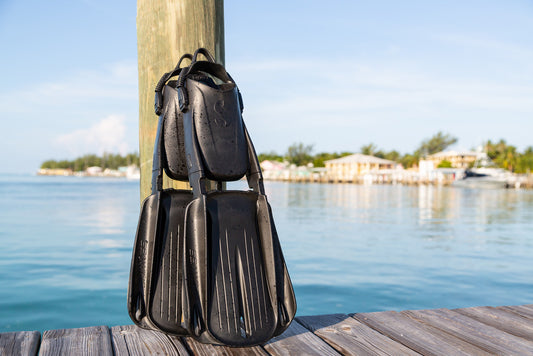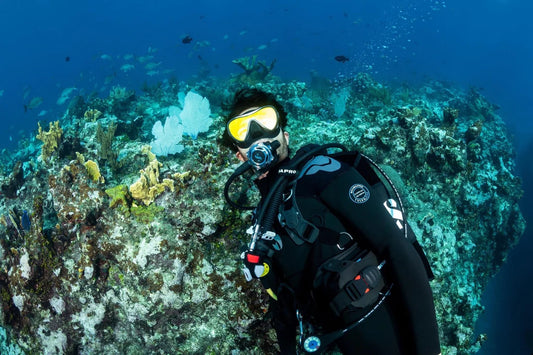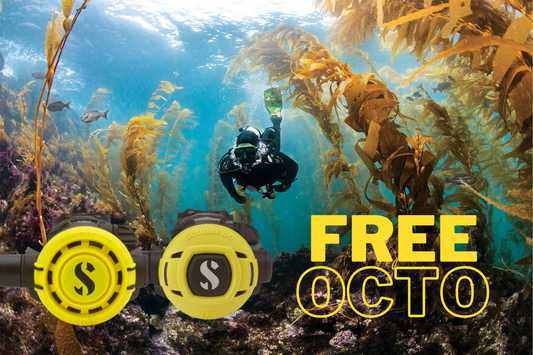
Anatomy of a Free-Flow
It's a common sight. A diver is about to enter the water when suddenly his octopus or even his primary second-stage suddenly does an impression of a jet engine at the end of a runway just prior to take-off. The sudden roar as gas at ten bars of pressure rushes out uncontrollably often precipitates the diver grabbing the offending item and shaking it violently or even frantically smacking it on something hard. In fact all he needs to do is put his thumb over the mouthpiece but usually hastily fumbling with the tank valve solves the problem instead, even if it means a substantial part of the tank-fill is lost.
Another more serious situation can arise if a second-stage suddenly starts to free-flow during a dive. This is usually associated with icing of the regulator during a dive in cold fresh water. (Seawater around most coasts rarely ever gets cold enough.) If the water is less than 10°C (50°F) there is a risk of freezing so this can happen at many fresh water sites at almost any time of the year.
For a competent diver, this should represent nothing more than an inconvenience. On the other hand, with inexperienced divers, this often this results in a fast or uncontrolled ascent with all the hazards to health implicated in such an action. However, there should be no reason for a diver so affected to panic. It's not as if the air supply has been cut off. In fact there is generally too much air arriving in the mouthpiece. The diver simply needs to hold the mouthpiece in such a way as to allow this excess air to escape and ascend immediately back to the surface aborting the dive. There is no need to lose control.
You may hear tales of tanks emptying in a moment but these free-flows generally happen early in to the dive and it takes time to empty a full tank. Try it. Simply take a full diving cylinder and open the valve and allow it to drain with all the air escaping. It's not quick. It isn't any quicker passing through the orifice in a tank valve during a regulator free-flow yet every year we hear stories of divers (in the UK at least) getting injured due to fast ascents precipitated by such circumstances.
Although every diver should have been trained to breathe from a free-flowing regulator the remaining air-supply can be reduced to zero very quickly. Swapping to breathe from a buddy's alternate second-stage is not often the answer either because presumably that regulator will be close to free-flowing too and doubling the air-flow for two divers will only make matters worse.
So why does it happen?
Take a little time to consider what your regulator does. Your tank is filled with gas at a very high pressure indeed. Your regulator takes the role of a couple of pressure-reducing valves set in series in the air supply path.
The first-stage reduces the pressure to around eight to ten bars more than ambient pressure and it does this by a pressure-sensitive diaphragm or piston pressing on a pre-tensioned spring. Just as your bicycle pump gets hot when pumping up tyres, the reduction in pressure causes a drop in temperature at the first-stage.
If the water or air surrounding it is already very cold the increased drop in pressure can cause that temperature to be very low indeed. Water surrounding the first-stage can freeze and the ice so formed can interfere with its action. For this reason, many regulators intended for use in these conditions are environmentally sealed so that the mechanism is kept dry at all times. Other designs use a large heat sink to transfer heat from the water once the regulator is submerged, and this is used to raise the temperature of the moving parts, which may be subject to very cold airflows. In the latter case the pre-tensioned spring is usually visible through large slots through which the water gets pumped as the valve spring moves with the action of breathing.
If the first-stage fails, the increased pressure of gas that is allowed to pass has an effect on the second-stage valve which itself is normally held closed by its own pre-tensioned spring, and an unstoppable free-flow is the result. Free-flows due to icing usually start at the first-stage and the high flow of air can then cause the second-stage to ice up.
However, this doesn't explain why a regulator suddenly goes into an unstoppable free-flow when a diver is standing on the swim-platform of a boat in the warm Caribbean.
Modern regulators are designed to make the work of breathing as easy as possible. Once the gas pressure is reduced from that in the tank, in the medium pressure hose that connects the two parts of the regulator, it is delivered on demand at ambient pressure each time the diver inhales. How does it do that?
A simple valve is pulled open by a lever that in turn is pressed upon by a pressure-sensitive diaphragm usually at the front of the second-stage and also available to be pressed to 'purge' the regulator. The valve controls the airflow. This is adjusted so that the diaphragm is in equilibrium with either the air-pressure or water-pressure on it.
When the diver inhales there is a drop in pressure inside the body of the second-stage, the outside pressure presses in the diaphragm, and this operates the lever, which in turn opens the valve and lets the air flow through.
Regulator designers strive to make their regulators breathe as easily as they can. The effort needed to 'crack open' the valve is made as little as possible by a highly sensitive diaphragm with a good mechanical design. This cracking-pressure can be increased by means of an adjustment knob that is used to increase the tension on the spring otherwise holding the valve closed. By no means do all regulators have this breathing resistance adjustment knob. There are philosophical arguments surrounding the need for this knob. There are some that say if you need to reduce the airflow you should simply inhale less heartily.
The designer also takes into consideration that once the air is flowing through the body of the second-stage it should be as unimpeded as possible. He uses a 'venturi' effect to keep the airflow clean.
Unfortunately, if there is a dramatic and unimpeded fast flow of air across the back of the pressure-sensitive diaphragm this can cause an apparent drop in pressure which is taken up by the pressure on the front of the diaphragm. This causes it to move inwards, putting pressure on the lever that in turn opens the second-stage valve further. The effect is exponential.
To counteract this effect, designers often add a venturi plus/minus lever that simply positions a vane within the flow or air, breaking it up and stopping the 'venturi' effect. It's like putting a thumb over the mouthpiece!
Unlike a thumb you can still breathe from the regulator. In fact there are those that cannot tell the difference in the breathing characteristics of their regulators and permanently leave the 'venturi' lever in the minus position.
So if you regulator suddenly free-flows prior to diving, put your thumb over the mouthpiece to increase the pressure within the body of the second-stage and on the back of the diaphragm. This allows the diaphragm to reposition itself and the valve to close.
Free-flows caused by icing are another matter. The pressure at the valve of the second-stage has become too great for the spring to keep the valve shut because of the increased pressure of gas from the first-stage. Again the effect is exponential because the fact that nothing impedes the airflow means that the icing effect is increased and ice will then begin to form also at the second-stage.
The only way to stop free-flow due to icing is to eliminate the chance of icing happening in the first place.
Firstly, choose a regulator designed to be used in cold fresh water. This may well have an environmental isolation kit to keep the works dry or a designed-in heat sink. The second-stage should have plenty of metal parts to act as a heat sink too. The next thing, which can be even more important, is to take precautions to stop the circumstances that cause icing.
Do this by making sure the air in your tank is properly dry by getting it from a well-managed compressor. Avoid inhaling moist air back into your regulator at the surface before diving. Avoid purging a regulator in cold air before diving.
Avoid breathing from your regulator in the air if the first-stage is damp. Take those initial test breaths only when the first-stage is fully submerged.
Avoid big airflows by keeping demand to a minimum. Breathe gently when underwater and do not double airflow by allowing use of your alternate air source unless it is a dire emergency. Do not use your regulator to inflate a marker buoy or lift bag.
Practise breathing from a free-flowing regulator by purposefully pressing in the regulator]s purge button. You may even have forgotten how to do it.
Plan dives which do not require mandatory decompression stops and keep to a depth from which you can make an emergency swimming ascent if need be. Most cold-water free-flows denote a pressure increase from the first-stage that is unmanageable by the second-stage valve spring.
Check with the guys at Mike's that your regulator is suitable for use in cold fresh water.
Happy Diving - John Bantin



